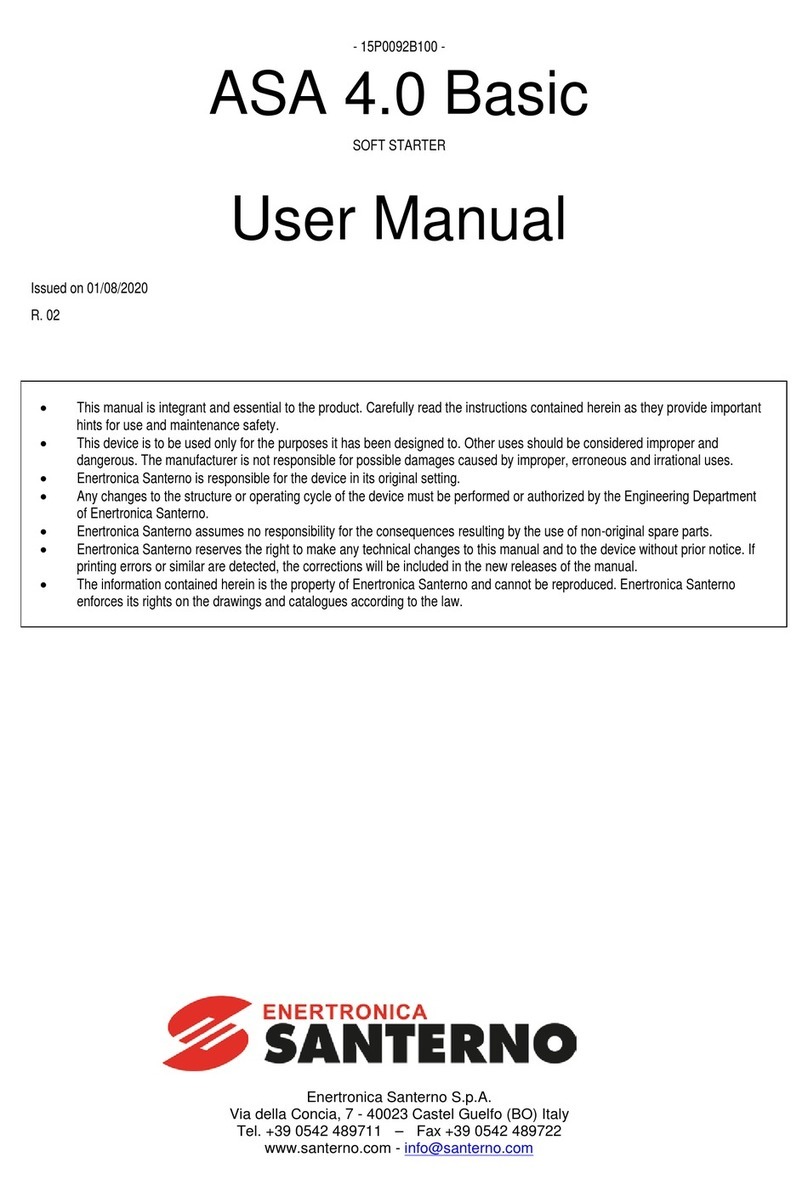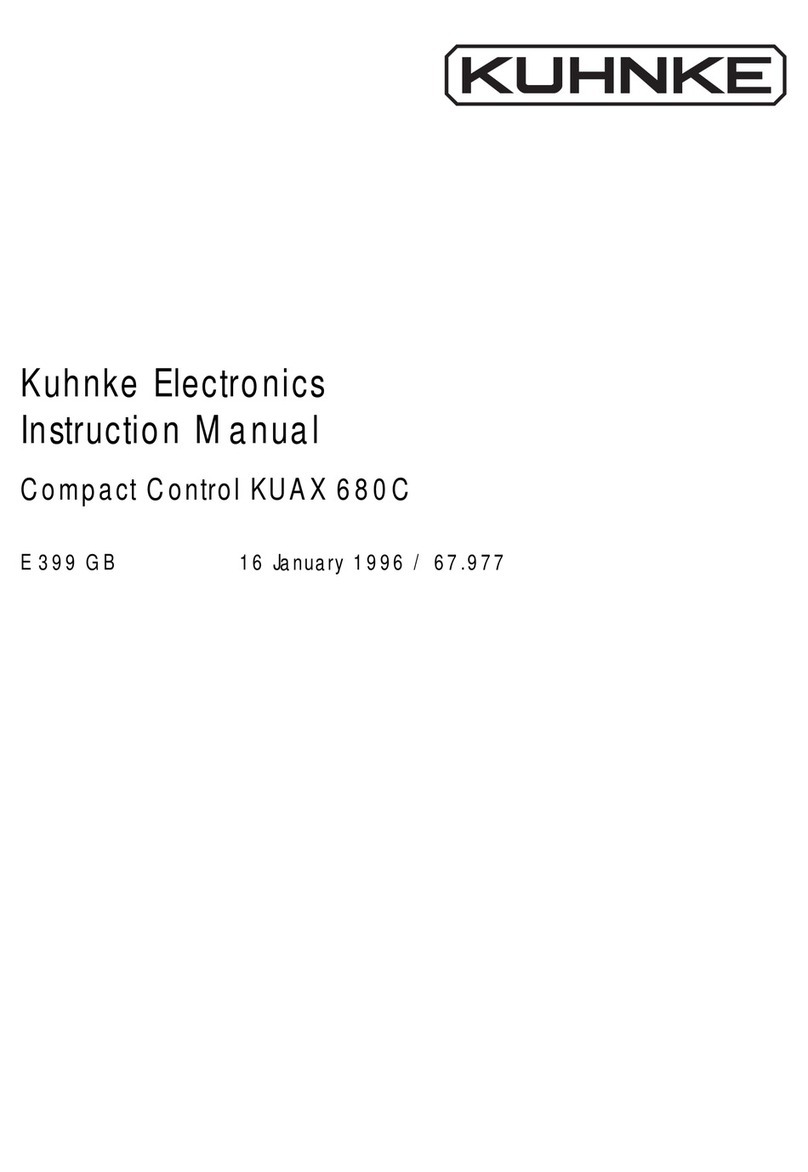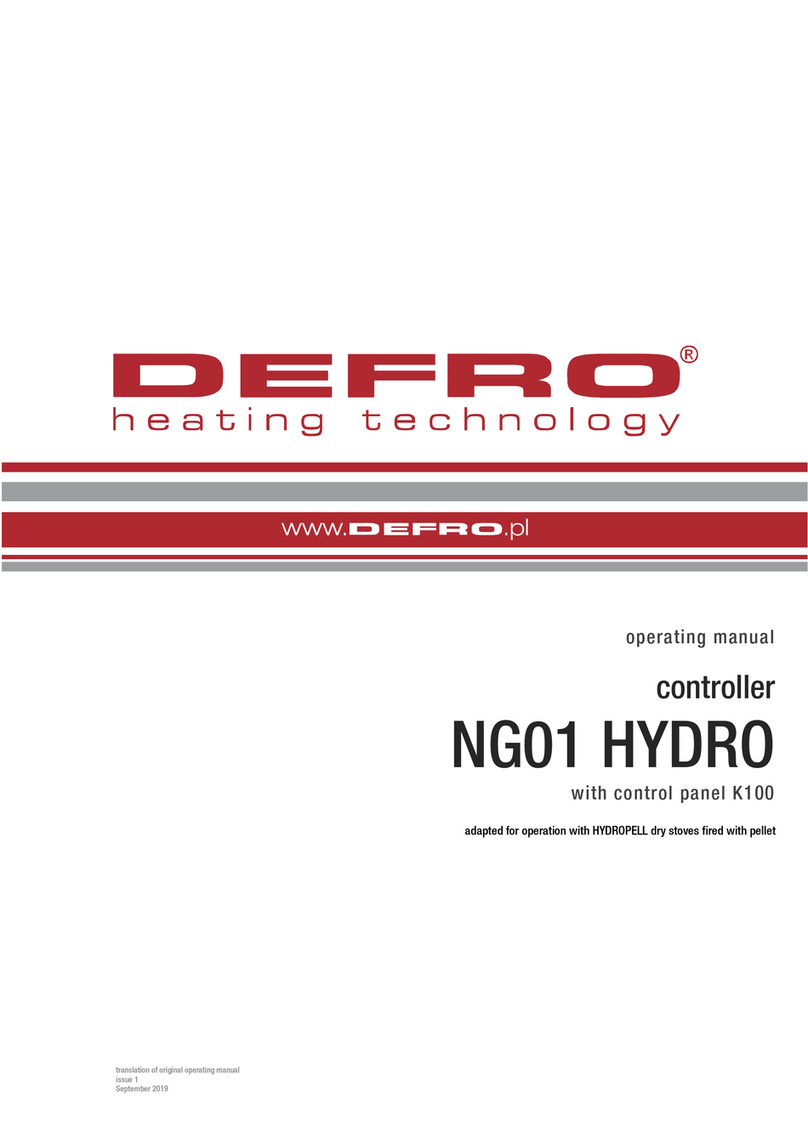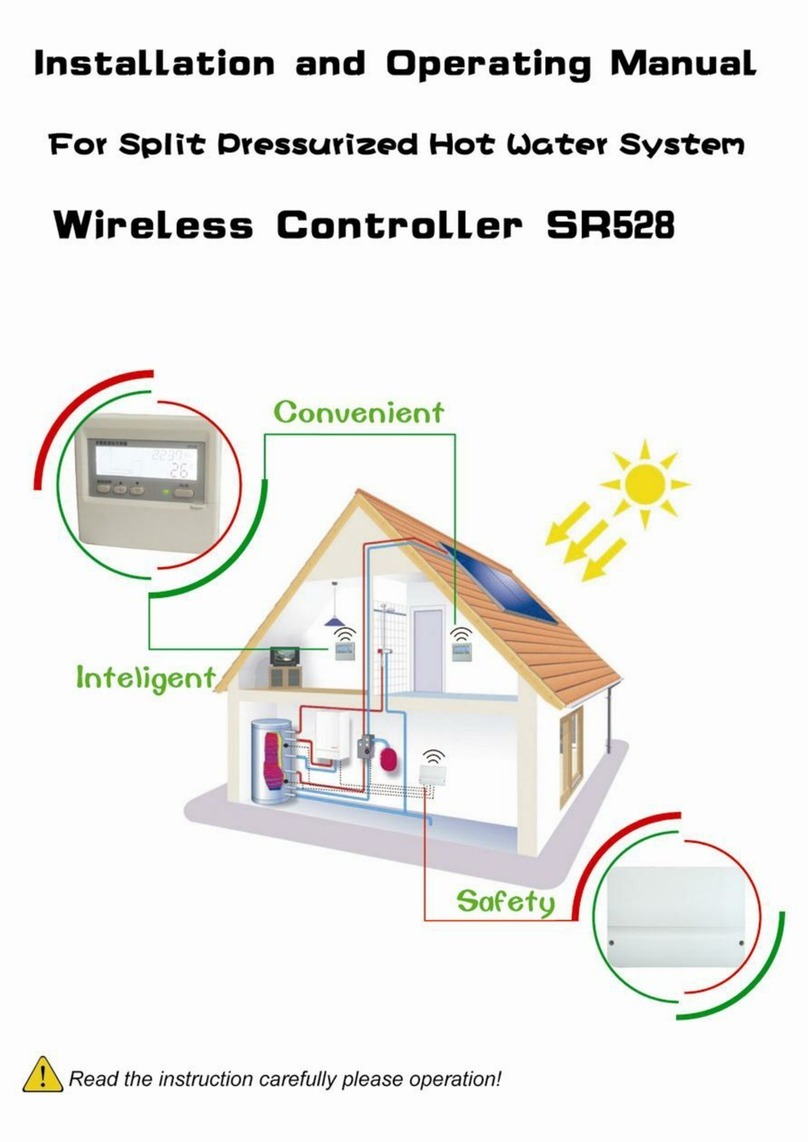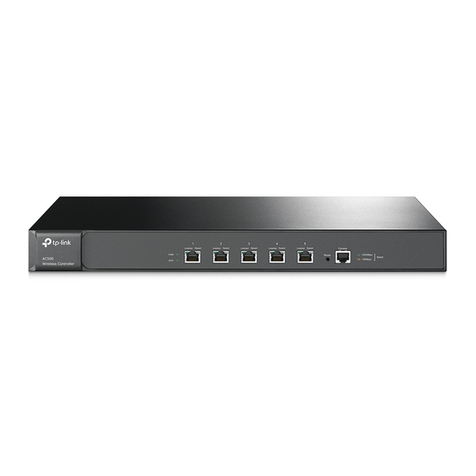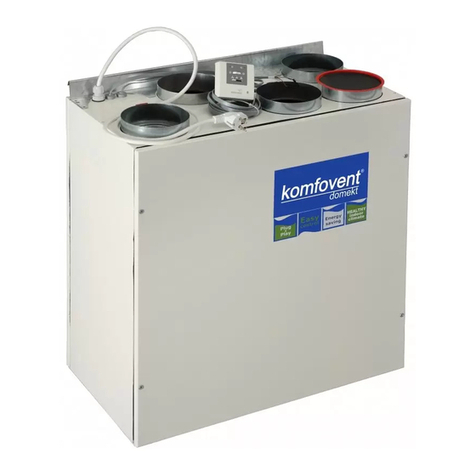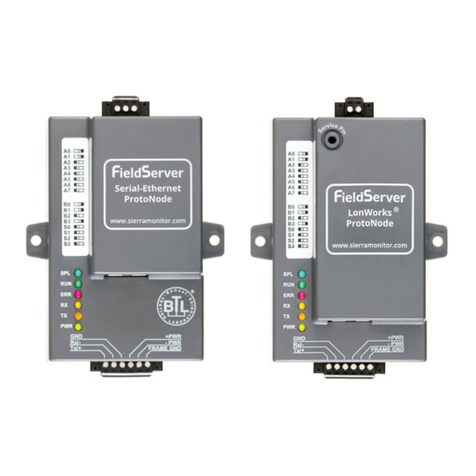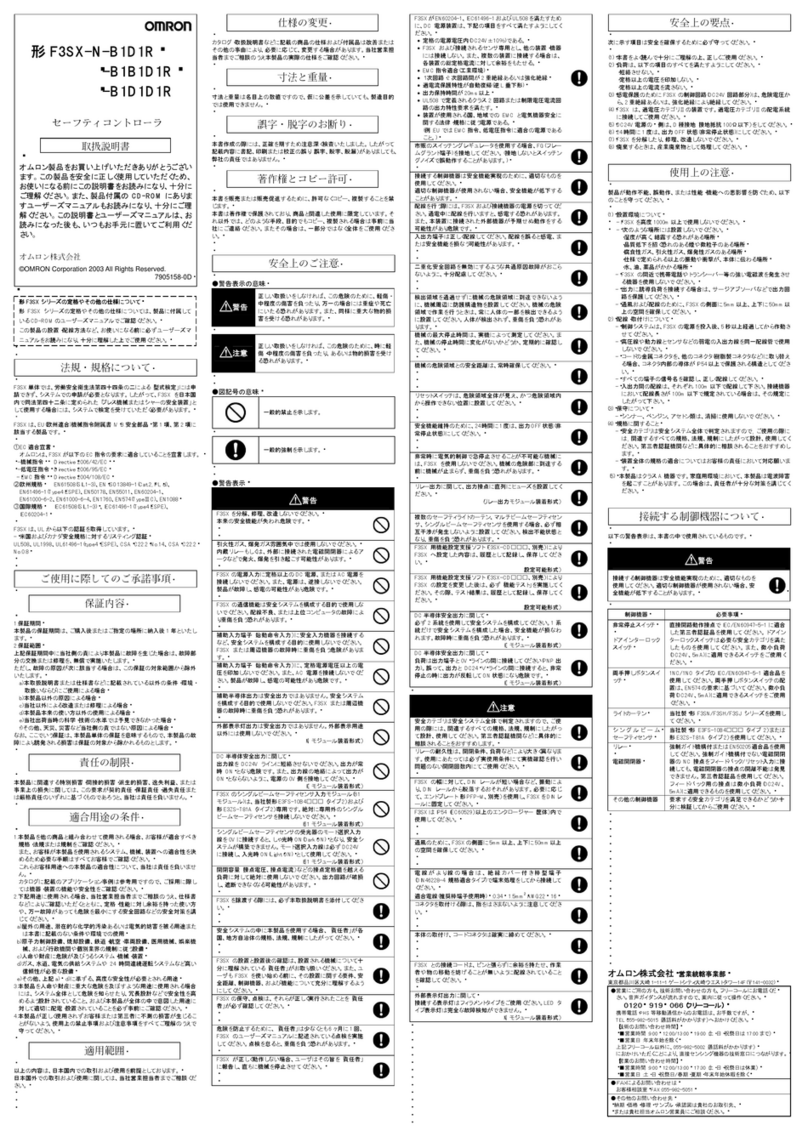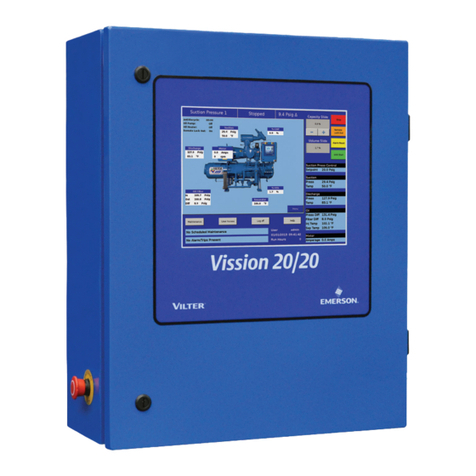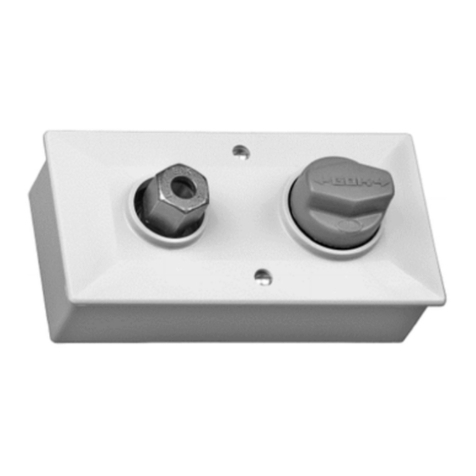Enertronica Santerno ASAC-1 Series User manual

Enertronica Santerno S.p.A.
Via della Concia, 7 - 40023 Castel Guelfo (BO) Italy
Tel. +39 0542 489711 –Fax +39 0542 489722
www.santerno.com - info@santerno.com
- 15P0071B600 -
ASAC-1
SOFT STARTER
Issued on 1/11/19
R. 04
•
This manual is integrant and essential to the product. Carefully read the instructions contained herein as they provide
important hints for use and maintenance safety.
•This device is to be used only for the purposes it has been designed to. Other uses should be considered improper and
dangerous. The manufacturer is not responsible for possible damages caused by improper, erroneous andirrational uses.
•Enertronica Santerno is responsible for the device in its original setting.
•Any changes to the structure or operating cycle of the device must be performed or authorized by the Engineering
Department of Enertronica Santerno.
•Enertronica Santerno assumes no responsibility for the consequences resulting by the use of non-original spare parts.
•Enertronica Santerno reserves the right to make anytechnical changes to this manual and to the device without prior
notice. If printing errors or similar are detected, the corrections will be included in the new releases of the manual.
•The information contained herein is the property of Enertronica Santerno and cannot be reproduced. Enertronica Santerno
enforces its rights on the drawings and catalogues according to the law.
Contents
1Caution Statements............................................................................................................................................2
1.1 Avertissements à l'attention des clients canadiens................................................................................................................2
2Mechanical Installation.......................................................................................................................................3
2.1 Dimensions and Weights.....................................................................................................................................................3
2.2 Physical Installation.............................................................................................................................................................3
3Electrical Installation..........................................................................................................................................4
3.1 Power Terminations.............................................................................................................................................................4
3.2 Control Voltage ...................................................................................................................................................................4
3.3 Control Circuits....................................................................................................................................................................4
3.4 Outputs...............................................................................................................................................................................5
3.5 Electrical Schematics...........................................................................................................................................................5
4Adjustments.......................................................................................................................................................6
5Troubleshooting.................................................................................................................................................8
5.1 Feedback LEDs...................................................................................................................................................................8
5.2 Trip Codes..........................................................................................................................................................................8
5.3 Protections..........................................................................................................................................................................8
5.4 Reset..................................................................................................................................................................................9
6Accessories......................................................................................................................................................10
6.1 Finger Guard Kit................................................................................................................................................................10
6.2 Remote Operator...............................................................................................................................................................10
6.3 Communication Modules...................................................................................................................................................10
6.4 PC Software......................................................................................................................................................................10
7Specifications...................................................................................................................................................11
7.1 Current Ratings.................................................................................................................................................................11
7.2 Semiconductor Fuses........................................................................................................................................................11
7.3 General Technical Data.....................................................................................................................................................12
7.4 Model Code.......................................................................................................................................................................13

2/14
ASAC-1
1Caution Statements
Caution Statements cannot cover every potential cause of equipment damage but can highlight common causes of damage. It is the
installer's responsibility to read and understand all instructions in this manual prior to installing, operating or maintaining the equipment,
to followgood electrical practice including applying appropriate personal protective equipment and to seek advice before operating this
equipment in a manner other than as described in this manual.
•Isolate the ASAC-1 completely from the power supply before attempting any work on the ASAC-1 or motor.
•Cables to the control inputs must be segregated from mains voltage and motor cabling.
•Some electronic contactor coils are not suitable for direct switching with PCB mount relays. Consult the contactor
manufacturer/supplier to confirm suitability.
•Do not apply incorrect voltages to the control input terminals.
CAUTION
Power factor correction capacitors must be connected to the input side of the soft starter. Connecting power factor
correction capacitors to the output side will damage thesoft starter.
The examples and diagrams in this manual are included solely for illustrative purposes. The information contained inthis manual is
subject to change at any time and without prior notice. In no event will responsibility or liability be accepted for direct, indirect or
consequential damages resulting from the use or application of this equipment.
WARNING – ELECTRICAL SHOCK HAZARD
The ASAC-1 contains dangerous voltages when connected to mains voltage. Only a qualified electrician should carry out the
electrical installation. Improper installation of the motor or the soft starter may cause equipment failure, serious injury or
death. Follow this manual and local electrical safety codes.
GROUNDING AND BRANCH CIRCUIT PROTECTION
It is the responsibility of the user or person installing the ASAC-1 to provide proper grounding and branch circuit protection
according to local electrical safety codes.
SHORT CIRCUIT
The ASAC-1 is not shortcircuit proof. After severe overload or short circuit, the operation of the ASAC-1 should be fully
tested byan authorised service agent.
1.1 Avertissements à l'attention des clients canadiens
AVERTISSEMENT
L'icône AVERTISSEMENT ci-contre signale les informations concernant des risques pouvant entraîner des blessures
graves, voire mortelles. Pour votre sécurité, veuillez consulter les avertissements sur cette page ou demander une copie du
présent manuel en français auprès devotre distributeur local.
AVERTISSEMENT - DANGER D'ÉLECTROCUTION
L’ASAC-1 contient des tensions dangereuses lorsqu'il est raccordé à l'alimentation secteur. Seul un électricien compétent
peut effectuer l'installation électrique. Une mauvaise installation du moteur ou de l’ASAC-1 peut déclencher une panne
d'équipement, provoquer de graves blessures ou même la mort. Suivre les instructions de ce manuel et des codes locaux
concernant la sécurité électrique.
AVERTISSEMENT
Toujours appliquer la tension de commande avant (ou en même temps que) la tension secteur.
AVERTISSEMENT
Isoler complètement l’ASAC-1 del'alimentation secteur avant de tenter toute intervention sur l’ASAC-1 ou sur le moteur.
Les bornes de commande peuvent être au potentiel de la tension de phase.

ASAC-1
3/14
2Mechanical Installation
2.1 Dimensions and Weights
08240.E
B
D
C
AE
HH
G
F
Width
mm (inch)
Height
mm (inch)
Depth
mm (inch)
mm (inch)
mm (inch)
mm (inch)
Weight
kg (lb)
Model
A
B
C
D
E
F
G
H
ASAC-1/007
ASAC-1/015
ASAC-1/018
98
82
201
188
165
55
90.5
23
2.2
ASAC-1/022
(3.85)
(3.22)
(7.91)
(7.40)
(6.49)
(2.16)
(3.6)
(0.9)
(4.85)
ASAC-1/030
ASAC-1/037
ASAC-1/045
145
124
215
196
193
-
110.5
37
4.0
ASAC-1/055
(5.70)
(4.88)
(8.46)
(7.71)
(7.59)
(4.4)
(1.5)
(8.81)
ASAC-1/075
ASAC-1/090
200
160
240
216
214
-
114.5
51
6.5
ASAC-1/110
(7.87)
(6.30)
(9.44)
(8.50)
(8.43)
(4.5)
(2.0)
(14.33)
2.2 Physical Installation
1
ASAC-1/007 ~ ASAC-1/055: Allow 100 mm (3.9 inch) between soft starters.
ASAC-1/075 ~ ASAC-1/110: Allow 200 mm (7.9 inch) between soft starters.
2
ASAC-1/007 ~ ASAC-1/055: Allow 50 mm (2.0 inch) between the soft starter and solid surfaces.
ASAC-1/075 ~ ASAC-1/110: Allow 200 mm (7.9 inch) between the soft starter and solid surfaces.
3
Soft starters may bemounted side by side with no clearance (that is, if mounted without communications modules).
4
The soft starter may be mounted on its side. Derate the soft starter's rated current by 15%.
12
3
4
08241.D

4/14
ASAC-1
3Electrical Installation
3.1 Power Terminations
1/L1, 3/L2, 5/L3, 2/T1, 4/T2, 6/T3
mm
2
(AWG)
A1, A2, A3, 01, 02, B4, B5, 13,
14, 23, 24 mm
2
(AWG)
007 - 030
037 - 055
075 - 110
007 - 110
10427.A
10 - 35
(8 - 2)
10428.A
14 mm
(0.55 inch)
25 - 50
(4 - 1/10)
10428.A
14 mm
(0.55 inch)
n/a
26
(1.02)
11
(0.43)
Ø 8.5
(0.33)
10429.A
mm (inch)
0.14 - 1.5
(26 - 16)
10428.A
6 mm
(0.24 inch)
Torx (T20)
3 Nm
2.2 ft-lb
Torx (T20)
4 Nm
2.9 ft-lb
n/a
n/a
7 mm
3 Nm
2.2 ft-lb
7 mm
4 Nm
2.9 ft-lb
n/a
3.5 mm
0.5 Nm max
4.4 in-lb max
3.2 Control Voltage
•ASAC-1/xxx/x/1 (110~240 VAC): A1, A2
•ASAC-1/xxx/x/1 (380-440 VAC): A2, A3
•ASAC-1/xxx/x/2 (24 VAC/VDC): A1, A2
WARNING
Always apply control voltage before (or with) mains voltage.
CAUTION
With 24 VAC/VDC use contacts rated for low voltage and low current (gold flash or similar).
3.3 Control Circuits
WARNING
Isolate the ASAC-1 completely from the power supply before attempting any work on the ASAC-1 or motor. Control
terminals may be at phase voltage potential.
CAUTION
For ASAC-1/xxx/x/2 (24 VAC/VDCcontrol voltage) units you can connect an external 24 VDC supply into thecontrol input
terminals 01, 02.
Two-wire control
Three-wire control
110~240 VAC
&
24 VAC/VDC
A3
A1 (+)
A2 (-)
01
02
A3
A1
A2
01
02
1
1
03241.D
A3
A1 (+)
A2 (-)
01
02
A3
A1
A2
01
02
2
3
2
3
03242.E
380-440 VAC
1
Start/Stop. Toreset atrip, open thenclose 02.
2
Start.
3
Stop. To reset a trip, open then close 02.

ASAC-1
5/14
3.3.1 Motor Thermistor
Motor thermistors can be connected directly to theASAC-1 terminals B4, B5. If motor thermistors are not used, there must be a link
between B4, B5 (the ASAC-1 is supplied with a link fitted).
B4
B5
B4
B5
B4
B5
03247.A
OK OK
3.4 Outputs
3.4.1 Main Contactor Output
The Main Contactor output (terminals 13, 14) closes as soon as thesoft starter receives astart command and remains closed while the
soft starter is controlling the motor (until the motor starts a coast to stop, or until the end of a soft stop). The Main Contactor output will
also open if the soft starter trips.
The Main Contactor output can be usedto directly control a main contactor coil.
3.4.2 Programmable Output
The programmable output relay (terminals 23, 24) can be used to signal either trip or run status. This relay is normally open.
Trip:
The relay closes when the ASAC-1 trips. The relay can be used to operate theshunt-trip mechanism of an upstream circuit breaker (in
order to isolatethe motor branch circuit), or to signal the trip to an automation system or externally. The relay will open when the trip is
reset.
Run:
The relay operates when the soft start is complete, the bypass relays are closed and full voltage is beingapplied to the motor. The
relay can be used tooperate a contactor for power factor correction capacitors, or to signal soft starter runstatus to an automation
system.
3.5 Electrical Schematics
Soft starter installed with fuses and a main contactor.
6/T3
4/T2
2/T1
5/L3
3/L2
1/L1
13
14
M
K1
23
24
K1
03249.F
M
Motor (three phase)
K1
Main contactor
13, 14
Main contactor output
23, 24
Programmable output (set to Trip)

6/14
ASAC-1
4Adjustments
350%
90%
80%
70%
60%
400%
300%
50%100%
16s
8s 1
2s
10s
No
Soft Stop
450%250%
6s
4s2s
14s
20s
16
8 12
10
OFF
6
42
14
20
16
8 12
10
OFFTRIPRUN
ANY ANY
FWD FWD
6
42
5s
2s15s
5s
OFF
15s
5s2s
2s
15s
14
20
14244.C
1
2
3
78
6
5
4
1
Current Ramp
2
Current Limit
3
Motor Trip Class
4
Motor FLC
5
Soft Stop Time
6
Excess Start Time
7
Auxiliary Relay Function
8
Phase Sequence Protection
1
Current Ramp
Select the initial start current (A) and ramp time (B).
Current ramp starting extends the time soft starter takes to reach the
current limit and is suitable for generator set supplies, loads requiring
an extended start time or applications with extreme load variation
between starts.
The ramp time does not control the time the motor will take to reach
full speed.
Current
Time
2
Current Limit
Select the current limit (C).
The current limit is the maximum level of current the soft starter will
deliver to themotor during the soft start.
Current
Time
3
Motor Trip Class
Select the trip class for motor overload protection.
The trip class reflects the maximum time (in seconds) that the motor
can run at locked rotor current. The Motor Trip Class setting
assumes a locked rotor current of 600%.
Setting the motor trip class to "Off" disables motor overload
protection.
4
Motor FLC
Configure the soft starter to match the motor's full load current (FLC).
Configure according to the motor's nameplate current. Divide the
motor's FLC by the soft starter's maximum current rating (on the soft
starter's nameplate label).
08239.A
INPUTRATING: 200-440VAC, 50/60Hz,3PH
OUTPUTFLC: xxAAC53b4-6:354,30 kW@ 400V
AUXILIARYCONTACTS: 5A@ 250VAC/360VA,5A@30VDCResistive
WITHSTANDCURRENT: 5000ARMS,600VACmax.
POWERCONTACTS: #10 -#2AWG,6 -35 mm2(3-5Nm,2.2-3.7lb-ft)
AUXILIARY CONTACTS: 20 -16AWG,0.75- 1.5mm2(0.5 Nm, 4.5 lb-in)
Motor FLC
Soft starter FLC

ASAC-1
7/14
5
Soft Stop Time
Select the soft stop ramp time (D).
Soft stop extends the time soft starter takes to reduce voltage tozero.
The ramp time does not control the time the motor will take to stop
completely.
Voltage
Time
6
Excess Start Time
Configure the soft starter's excess start time protection.
Select a time slightly longer than the motor requires for a normal
healthy start. The soft starter will trip if the start does not complete
within the selected time (E).
Current
Time
7
Auxiliary Relay Function
Select the function ofthe soft starter's programmable output
(terminals 23, 24).
When set to "Run", the relay will operate when thesoft start is
complete. When set to "Trip", the relay will operate when thesoft
starter trips.
Time
8
Phase Sequence Protection
Configure the soft starter's phase sequence protection.
Select the allowable phase sequences. A setting of "Fwd" allows
forward sequence (positive rotation) only and a setting of "Any"
defeats the protection.
NOTE
Auxiliary relayfunction and phase sequence are configured using a shared switch. Set the auxiliary relay function as
required, then set phase sequence protection.

8/14
ASAC-1
5Troubleshooting
5.1 Feedback LEDs
LED Status
Ready
Run
Off
No control power
Motor not running
On
Ready
Motor running at full speed
Flash
Starter tripped
Motor starting or stopping
5.2 Trip Codes
The Ready LED will flash a different number of times to indicate the cause of the trip.
Ready LED
Description
x 1
Power Circuit: Check mains supply (L1, L2, L3), motor circuit (T1, T2, T3), soft starter SCRs and bypass relays.
x 2
Excess Start Time: Check load, increase Current Limit or adjust Excess Start Timesetting.
x 3
Motor Overload: Allow motor to cool, reset soft starter and restart.
The soft starter cannot be reset until the motor has cooled.
x 4
Motor Thermistor: Check motor ventilation and thermistor connection B4, B5. Allow motor to cool.
x 5
Current imbalance: Check for mains supply or linecurrent imbalance (L1, L2, L3).
x 6
Supply Frequency: Check mains voltage is available and supply frequency is in range.
x 7
Phase sequence: Check for correct phase sequence.
x 8
Network Communication Failure (between module and network): Check network connections, settings and
configuration.
x 9
Starter Communication Failure (between starter and module): Remove and refit accessory module.
x 10
Bypass Overload: Starter rating may betoo low for the application.
5.3 Protections
The ASAC-1 includes the following types of protection for the motor and starter:
5.3.1 Excess Start Time Protection
The ASAC-1 will trip on excess start time if themotor does not successfully start within the time selected in the Excess Start Time
setting. This may indicate that the load hasstalled.
If the soft starter frequently trips on excess start time:
•check that the Current Limit setting is high enough for the application
•check that the Excess Start Timesetting is long enough for the application
•check that the load has not stalled or increased since thesoft starter was installed
5.3.2 Motor Overload Protection
The ASAC-1 will trip on motor overload if it calculates that the motor has been runningabove its operating range for longer than the time
selected in the Motor Trip Class setting. Motor Trip Class should be set tomatch the motor's locked rotor time. If this information is
not available from the motor datasheet, use the default setting (Motor Trip Class = 10). Using a higher setting can damage the motor.
NOTE
Motor overload protection does not protect the soft starter, and does not protect the motor from short circuit.
14243.A
Ready
Run
Ready
Run
Reset
350 %
90%
80%
70%
60%
400%300%
50%100 %
16s
8s 12s
10s
No
S oft Stop
450%
250%
6s
4s
2s
14s
20s
16
812
10
OF F
6
4
2
14
20
16
812
10
OFFTRIPR U N
FWD F WD
AN Y ANY
6
4
2
5s
2s 1 5s
5s
OFF
15s
5s
2s
2s
15s
4
2
14
20

ASAC-1
9/14
5.3.3 Current Imbalance Protection
The ASAC-1 will trip on current imbalance if the highest and lowest currents on the three phases vary by an average of 30% for more
than 3 seconds. Current imbalance protection is not adjustable, and is only active when the average motor current is 50% or more of
the programmed motor FLC.
If the soft starter frequently trips on current imbalance:
•check that there is no imbalance on the mains voltage (on the input side of the soft starter)
•insulation test the motor
•move all input cables over one position (move L1 cable to L2,move L2 cable to L3, move L3 cable to L1) to rule out acabling
fault
5.3.4 Supply Frequency Protection
The soft starter will trip onsupply frequency if thefrequency rises above 72 Hz orfalls below 40Hz for morethan five seconds while the
soft starter is running. These trip points are not adjustable.
In pre-start, starting and stopping modes the high and low frequency limits both apply with no time delay.
A supply frequency trip will also occur if:
•all three input phases are lost while the soft starter is running
•all three input phases fall below 120 VAC at start or while the soft starter is running
•the line contactor opens while running
5.3.5 Bypass Overload Protection
Bypass overload protection protects the soft starter from severe operating overloads while running. The protection is not adjustable and
has two components:
•The soft starter will trip if it detects overcurrent at 600% of the programmed motor full load current.
•The soft starter models the temperature ofthe internal bypass relays and will trip if the temperature exceeds the safe
operatinglevel.
If the trip occurs frequently, this indicates that the soft starter has not been selected correctly for the application.
5.4 Reset
Trips can be cleared by pressing the Reset button on the soft starter, sending a Reset commandfrom the serial communications
network, or by switching the control inputs.
To clear a trip via the control inputs, the soft starter requires a closed to open transition on the stop input (02).
•In three-wire control, use the external stop button to momentarily open thestop input (open A1-02).
•In two-wire control, if the soft startertripped with astart signal present, remove the start signal (open A1 to 01, 02).
•In two wire control, if the ASAC tripped with no start signal present (eg ASAC-1 motor thermistor trip), apply then remove the
start signal (close then reopen A1 to 01, 02).
The Reset button is located onthe front of the unit, above the adjustment switches.
The soft starter will trip again immediately if the cause of the trip still exists.

10/14
ASAC-1
6Accessories
6.1 Finger Guard Kit
Finger guards may bespecified for personnel safety. Finger guards fit over the soft starter terminals to prevent accidental contact with
live terminals. Finger guards provide IP20 protection when used with cable of diameter 22 mm or greater.
6.2 Remote Operator
The Remote Operator can control and monitor the soft starter's performance. Functionality includes:
•Operational control (Start, Stop, Reset, Quick stop)
•Starter status monitoring (Ready, Starting, Running, Stopping, Tripped)
•Performance monitoring (Motor current, Motor temperature)
•Trip code display
•4-20 mA analog output (Motor Current)
6.3 Communication Modules
ASAC-1 soft starters support network communication via easy-to-install communications modules. Each soft starter can support one
communications module at a time.
Available protocols:
Ethernet (Profinet, Modbus TCP, Ethernet/IP), Profibus, DeviceNet, Modbus RTU, and USB.
NOTE
Ethernet communication modules are not suitable for use with ASAC starters using 380/440 VAC control voltage.
6.4 PC Software
The software allows comprehensive management of soft starters. It provides the following functionality:
Operation of soft starter networks containing up to 254 individual soft starters
•Operational control (Start, Stop, Reset, Quick stop)
•Starter status monitoring (Ready, Starting, Running, Stopping, Tripped)
•Performance monitoring (Motor current, Motor temperature)
To use RemoteDrive with the ASAC-1, thesoft starter must be fitted with aUSB Module, Modbus Module or a Remote Operator.

ASAC-1
11/14
7Specifications
7.1 Current Ratings
For operating conditions not covered by these ratings charts, download Santerno's free WinStart selection application, or contact your
local supplier.
7.1.1 AC53b format
80 A
:
AC-53b
3.5
-
15
:
345
Off time (seconds)
Start time (seconds)
Start current (multiple of motor full load current)
Starter current rating (amperes)
7.1.2 Ratings
AC53b 4-6:354
< 1000 metres
AC53b 4-20:340
< 1000 metres
40 °C
50 °C
40 °C
50 °C
ASAC-1/007
18 A
17 A
17 A
15 A
ASAC-1/015
34 A
32 A
30 A
28 A
ASAC-1/018
42 A
40 A
36 A
33 A
ASAC-1/022
48 A
44 A
40 A
36 A
ASAC-1/030
60 A
55 A
49 A
45 A
AC53b 4-6:594
< 1000 metres
AC53b 4-20 580
< 1000 metres
40 °C
50 °C
40 °C
50 °C
ASAC-1/037
75 A
68 A
65 A
59 A
ASAC-1/045
85 A
78 A
73 A
67 A
ASAC-1/055
100 A
100 A
96 A
87 A
ASAC-1/075
140 A
133 A
120 A
110 A
ASAC-1/090
170 A
157 A
142 A
130 A
ASAC-1/110
200 A
186 A
165 A
152 A
7.2 Semiconductor Fuses
Semiconductor fuses can be used with ASAC-1 soft starters to reduce the potential for damage to SCRs from transient overload currents
and for Type 2 coordination. ASAC-1soft starters have been tested to achieve Type 2 coordination with semiconductor fuses. Suitable
Bussmann and Ferraz/Mersen semiconductor fuses are detailed below.
Model SCR I2t (A2s)
Ferraz/Mersen Fuse
European/IEC Style
(North American Style)
Bussmann Fuse
Square Body (170M) Bussmann Fuse
British Style (BS88)
ASAC-1/007 1150
6.6URD30xxxA0063
(A070URD30xxx0063)
170M-1314 63 FE
ASAC-1/015 8000
6.6URD30xxxA0125
(A070URD30xxx0125)
170M-1317 160 FEE
ASAC-1/018 10500
6.6URD30xxxA0160
(A070URD30xxx0160)
170M-1318 160 FEE
ASAC-1/022 15000
6.6URD30xxxA0160
(A070URD30xxx0160)
170M-1318 180 FM
ASAC-1/030 18000
6.6URD30xxxA0160
(A070URD30xxx0160)
170M-1319 180 FM
ASAC-1/037 51200
6.6URD30xxxA0250
(A070URD30xxx0250)
170M-1321 250 FM
ASAC-1/045 80000
6.6URD30xxxA0315
(A070URD30xxx0315)
170M-1321 250 FM
ASAC-1/055 97000
6.6URD30xxxA0315
(A070URD30xxx0315)
170M-1321 250 FM
ASAC-1/075 168000
6.6URD31xxxA0450
(A070URD31xxx0450)
170M-1322 500 FMM
ASAC-1/090 245000
6.6URD31xxxA0450
(A070URD31xxx0450)
170M-3022 500 FMM
ASAC-1/110 320000
6.6URD31xxxA0450
(A070URD31xxx0450)
170M-3022 500 FMM
xxx = Blade Type. Contact Ferraz/Mersen for options.

12/14
ASAC-1
7.3 General Technical Data
Mains Supply
Mains voltage (L1, L2, L3)
4 ................................................................................................................................ 3x 200 VAC ~ 440VAC (+ 10% / - 15%)
5 ................................................................................................................................ 3x 200 VAC ~ 575VAC (+ 10% / - 15%)
Mains frequency (at start) .......................................................................................................................................... 45 Hz to 66 Hz
Rated insulation voltage ..................................................................................................................................................... 600VAC
Form designation..............................................................................................................Bypassed semiconductor motor starter form 1
Control voltage (01, 02)
ASAC-1/xxx/x/1 ................................................................................................................................... 110-240 VAC (+ 10% / - 15%)
....................................................................................................................................................or 380-440 VAC (+ 10% / - 15%)
ASAC-1/xxx/x/2 ............................................................................................................................................... 24 VAC/VDC (± 20%)
Current consumption (during run) ...................................................................................................................................... < 100 mA
Current consumption (inrush)
ASAC-1/xxx/x/1 ................................................................................................................................................................. 10 A
ASAC-1/xxx/x/2 ................................................................................................................................................................... 2 A
Inputs
Start (terminal 01) ...................................................................................................................................................... Normally open
...........................................................................................................................150 kΩ@ 300 VAC and 5.6 kΩ@ 24VAC/VDC
Stop (terminal 02) .................................................................................................................................................... Normally closed
...........................................................................................................................150 kΩ@ 300 VAC and 5.6 kΩ@ 24VAC/VDC
Outputs
Main contactor relay (terminals 13, 14) ......................................................................................................................... Normally open
.............................................................................................................................................6 A, 30 VDC/ 6 A, 250 VAC resistive
Programmable relay (terminals 23, 24) ........................................................................................................................ Normally open
.............................................................................................................................................6 A, 30 VDC/ 6 A, 250 VAC resistive
Environmental
Degree of Protection ASAC-1/007 to ASAC-1/055 ...................................................................................................................... IP20
Degree of Protection ASAC-1/075 to ASAC-1/110 ...................................................................................................................... IP00
Operating temperature ......................................................................................................................................... - 10 °C to +60 °C
Storage temperature ............................................................................................ -25 °C~+ 60 °C(to +70°C for less than 24 hours)
Humidity ................................................................................................................................................. 5%~95% Relative Humidity
Pollution degree ................................................................................................................................................... Pollution Degree 3
Vibration ............................................................................................................................................. IEC 60068 Test Fc Sinusoidal
........................................................................................................................................ 4 Hz to 13.2 Hz: ± 1 mm displacement
.......................................................................................................................................................... 13.2 Hz to 200 Hz: ± 0.7 g
EMC Emission
Equipment class (EMC) ........................................................................................................................................................ Class B
Conducted radio frequency emission ....................................................................................... 0.15 MHz to 0.5 MHz: < 56-46 dB (µV)
................................................................................................................................................. 0.5 MHz to 5 MHz: < 46 dB (µV)
.................................................................................................................................................. 5 MHz to 30MHz: < 50 dB (µV)
Radiated radio frequency emission ............................................................................................. 30MHz to 230 MHz: < 30 dB(µV/m)
...................................................................................................................................... 230 MHz to 1000MHz: < 37dB (µV/m)
EMCImmunity
Electrostatic discharge ..................................................................................................... 4kV contact discharge, 8 kV air discharge
Radio frequency electromagnetic field ...................................................................................... 0.15 MHz to 1000 MHz: 140 dB (µV)
Rated impulse withstand voltage (Fast transients 5/50 ns) .............................................................. 2kV line to earth, 1 kV line to line
Voltage dip and short time interruption .............................................................................................. 100 ms (at 40% nominal voltage)
Harmonics and distortion ...................................................................................................... IEC61000-2-4 (Class 3), EN/IEC61800-3
................................................................................................................................................................. EAC TR TC 020/2011
Short Circuit
Rated short-circuit current ASAC-1/007 to ASAC-1/022 ............................................................................................................. 5kA 1
Rated short-circuit current ASAC-1/030 toASAC-1/110 ........................................................................................................... 10 kA 1
1These short circuit ratings are with fuses used as given in the table under Semiconductor Fuses on page 11.
Heat Dissipation
During Start ............................................................................................................................................................ 3 watts / ampere
During Run ............................................................................................................................................................... 10 watts typical
Standards Approvals
CE .............................................................................................................................................................................. EN 60947-4-2
EAC (formerly GOST) ............................................................................................................ TRTC 004/2011 and TR TC 020/2011
RoHS .................................................................................................................................. Compliant with EU Directive 2011/65/EU
UL / C-UL ................................................................................................................................................................................ UL 508
Operational Life
ASAC-1/007~055 ............................................................................................................................................. 1,000,000 operations
ASAC-1/075~110 .................................................................................................................................................. 30,000 operations

ASAC-1
13/14
7.4 Model Code
ASAC-1/
/
/
Control voltage
1 = 110~240 VAC & 380-440 VAC
2 = 24 VAC/VDC
Mains voltage
4 = 200~440 VAC
5 = 200~575 VAC
Nominal kW rating @400 VAC
007~030: AC53b 4-6-354
037~110: AC53b 4-6-594

14/14
ASAC-1
This manual suits for next models
11
Table of contents
Other Enertronica Santerno Controllers manuals
Popular Controllers manuals by other brands
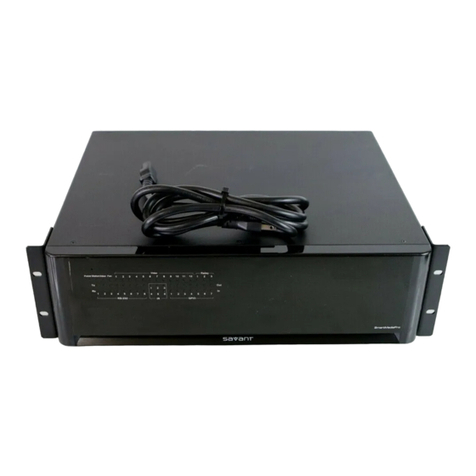
Savant
Savant SmartMedia 6 Quick reference guide
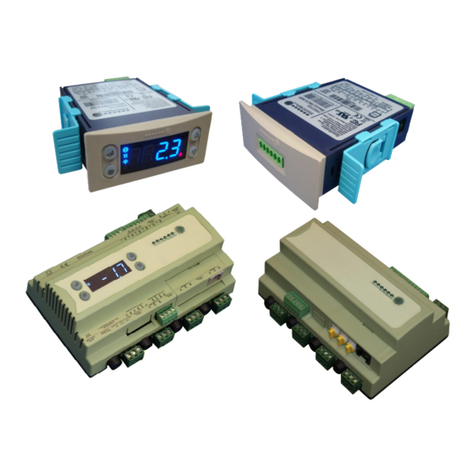
Resource Data Management
Resource Data Management PR0750-MOB Installation & user guide
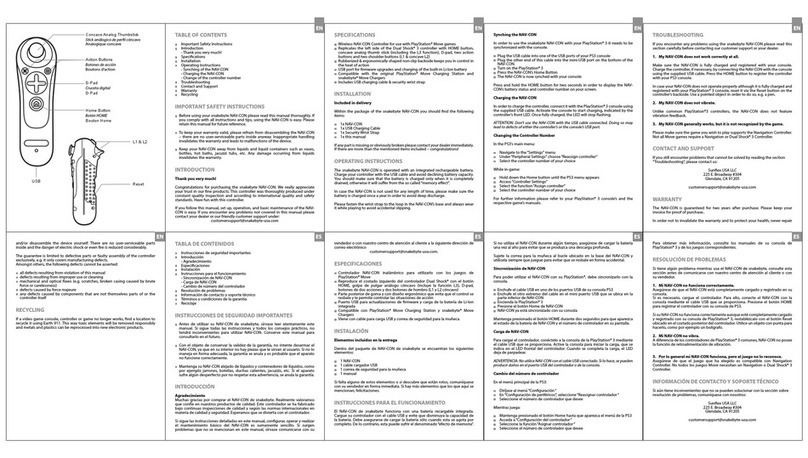
Snakebyte
Snakebyte Nav-Con user manual
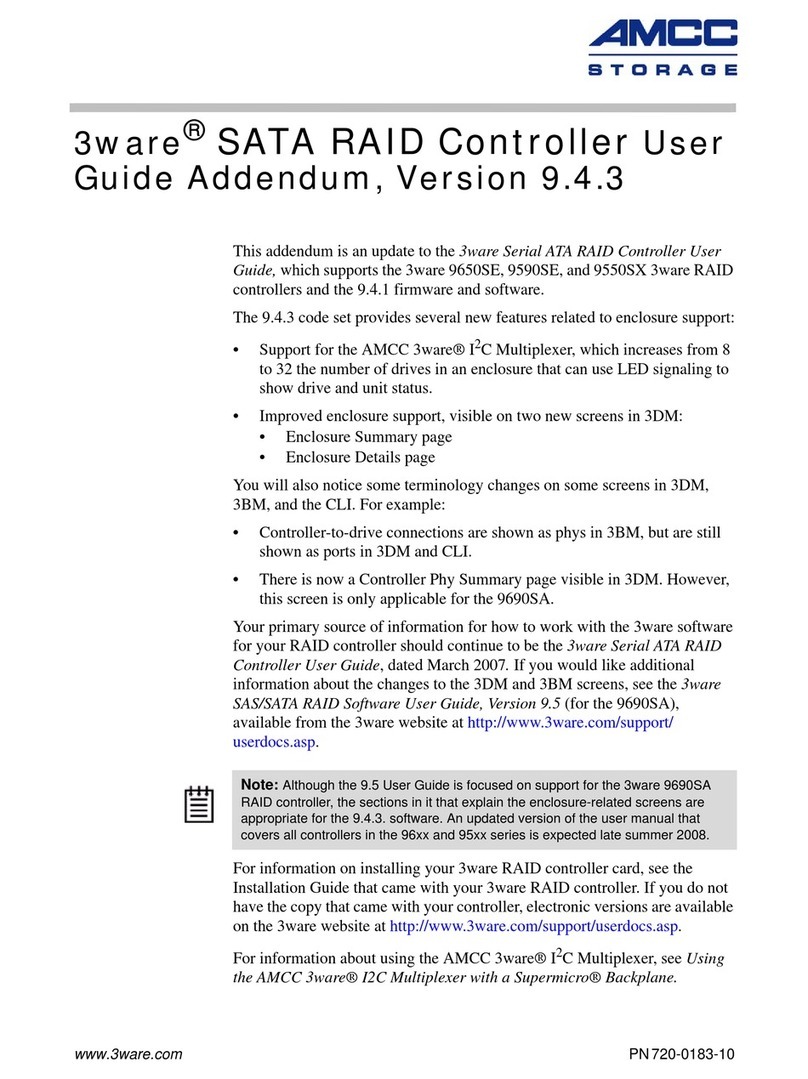
3Ware
3Ware 9590SE Series User guide addendum
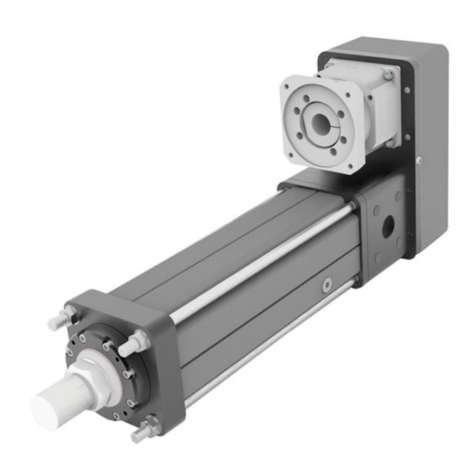
Exlar
Exlar Curtiss-Wright FTX Series Installation and service manual
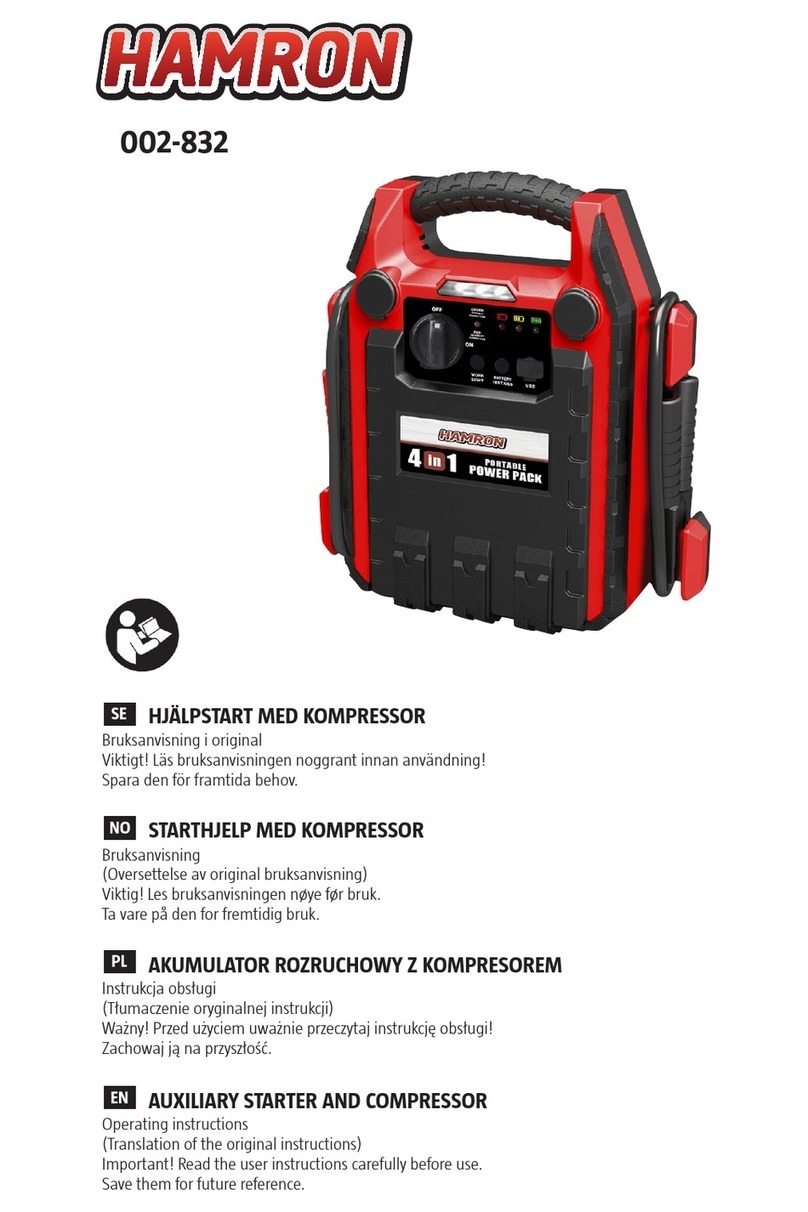
Hamron
Hamron 002-832 operating instructions
